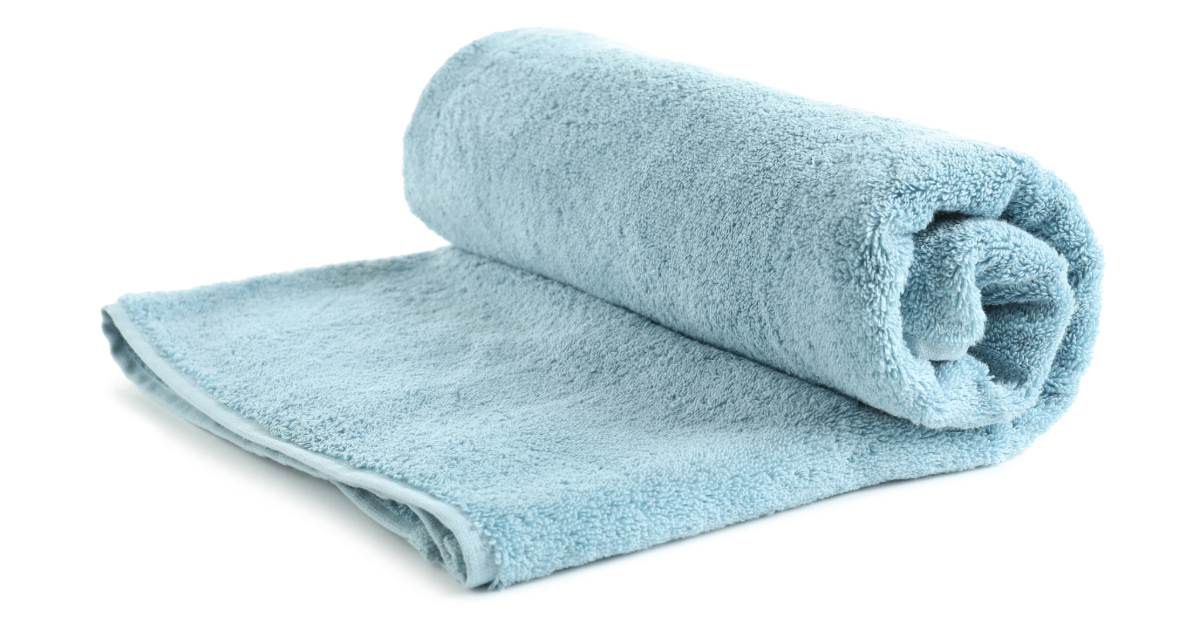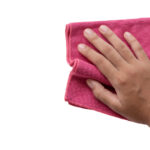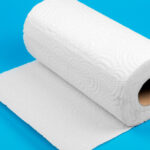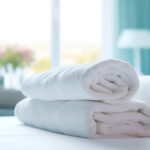When it comes to keeping your home clean, few tools are as essential as a good towel. But with so many options on the market, how do you know whether terry cloth or microfiber is right for your needs?

Terry cloth towels have been a household staple for over a century thanks to their ultra-absorbent woven loops.
Microfiber towels offer durability and lint-free cleaning through dense synthetic fibers. While both make excellent choices, their differing textures, care needs, and environmental impacts help determine the best fits.
Terry Towel Fabric: The Ultra-Absorbent Classic
With its trademark textured pile, terry cloth has been soaking up spills and drying bathers since the mid-1800s. The secret lies in its looped construction.
Terry cloth consists of uncut loops woven into a flat base fabric. These plush loops greatly expand the surface area, allowing the toweling to absorb over 20 times its weight in liquid. This exceptional absorbency makes terry an unbeatable choice for personal care and drying tasks.
Beyond bath towels, terry cloth lends its supreme moisture-wicking talents to car washing, window cleaning, sudsy kids, and more. Thanks to cotton’s durability, towels stand up well to repeated machine washing without excessive pilling.
When shopping for terry, pay attention to the fabric content. While most terry cloth contains cotton as the main fiber, textile makers also blend in materials like polyester or bamboo viscose to alter qualities like absorbency, durability, and comfort.
Key Takeaway: With its signature loops, terry cloth soaks up over 20 times its weight in liquid, making it ideal for personal care and drying tasks.
Terry Towel Pros
- Extreme absorbency – Drinks in water and dries fast
- Soft texture – Gentle on skin and surfaces
- Durability – Withstands repeated use and washing
- Economical pricing – Affordable for everyday use
- Eco-friendly options – Organic cotton and other sustainably sourced materials
Terry Towel Cons
- Prone to lint and pilling – Fuzz can transfer to surfaces
- Shrinkage likely – Cotton shrinks so pre-wash is essential
- Dampness risks mildew – Must fully dry after each use
- Standard cotton production problematic – Harms ecosystems without mindful farming
Microfiber Fabric: A Slick Synthetic for Cleaning
On the opposite end of the textile spectrum, microfiber provides a smooth, polished face for wiping away messes. Crafted from synthetic fibers, its construction maximizes surface area at the microscopic level.
Made from petroleum-based plastics like polyester and nylon, microfiber consists of fibers 100 times finer than human hair. When split and woven tightly together, these itty-bitty strands yield a featherweight fabric with immense absorbent power.
Thanks to the electrostatic charge of synthetic fibers, microfiber cloths attract and trap dirt, grease, and liquids. This makes them perfect for detail cleaning and dusting. From streak-free mirrors to spotless cars, microfiber leaves surfaces sparkling.
Microfiber towels come in options like waffle weave and microfiber chenille. These textured fabrics excel at coating surfaces evenly when polishing and waxing.
Pay attention to the blend of plastics used, as higher nylon content boosts absorbency. Also note microfiber’s vulnerability to heat damage to prevent melting.
Key Takeaway: Made of ultra-fine synthetic fibers, microfiber cloths absorb liquids while attracting dirt and grease through electrostatic charge.
Microfiber Towel Pros
- Extreme liquid absorbency – Ultra-fine fibers soak up 7-8 times their weight
- Lint-free – Won’t leave fuzz behind
- Durable – Withstands many uses and washes
- Dries quickly – Prevents mildew growth
Microfiber Towel Cons
- Not as soft as cotton towels
- Prone to heat damage – Melts under high drying heat
- Not biodegradable – Persists in landfills
- Environmental impact of plastic production
Terry vs. Microfiber: Which is Better for Home Use?
Now that you know the unique perks of terry and microfiber, how do you choose which is best for household jobs?
First, think about your intended uses. For drying off freshly showered bodies, soaking up big spills, or window washing, terry cloth is the clear choice. Thanks to its supreme moisture absorption, gentleness on skin, and eco-friendly cotton options, terry excels at personal care and cleaning.
For tasks requiring gentle frictionless wiping across smooth or polished surfaces, microfiber reigns supreme. Electrostatic action helps lift away grimy buildup from hard floors, countertops, and electronics without leaving lint behind. Just take care to avoid direct heat during laundering.
Many households stock both terry and microfiber towels for flexibility. Terry cotton tackles bathing and spill control, while microfiber swoops in for fine dusting and streak-free cleaning.
Bamboo viscose blends provide a happy medium, offering softness along with wicking ability. Evaluate each cleaning scenario to select the best textile for the job.
Key Takeaway: For personal drying and heavy-duty moisture absorption, choose terry cloth towels. For lint-free cleaning of smooth surfaces, reach for microfiber. Blend and match both in your home.
Terry Cloth Best Uses
- Bathing towels
- Drying off kids and pets
- Cleaning up large spills and messes
- Washing cars and windows
- Covering dough for rising
Microfiber Best Uses
- Dusting and surface cleaning
- Wiping mirrors and glass
- Cleaning phones, TVs, and electronics
- Drying delicate surfaces like car paint
- Waxing and polishing smooth finishes
Terry vs Microfiber Comparison Chart
| Factor | Terry Towel | Microfiber Towel |
|---|---|---|
| Fibers | Cotton loops | Synthetic (polyester/nylon blend) |
| Absorbency | Ultra-absorbent, upto 20x weight | Highly absorbent, upto 8x weight |
| Texture | Soft, fluffy pile | Smooth, short pile |
| Cleaning Ability | Great for wet cleaning | Excellent for dusting |
| Lint Production | Moderate | Very low |
| Heat Tolerance | Good | Poor, melts easily |
| Eco-Friendliness | Renewable material, biodegradable | Plastic fibers persist in landfills |
| Price | Economical | Mid-range |
Terry and Microfiber Towel Care
To keep towels performing their best, proper laundering is key for both terry and microfiber:
For terry cloth:
- Machine wash cool or warm
- Avoid fabric softener
- Machine dry on medium
- Expect some shrinkage
For microfiber:
- Wash separately
- Use mild detergent
- Machine wash cool
- Line dry or no-heat tumble dry
- Heat can melt fibers
Stretch the lifespan of all towels by promptly hanging them up to dry after each use. This prevents mildew from setting in. Regularly check labels for special care recommendations.
FAQs
Why is terry cloth good for drying?
With its signature loop construction, terry fabric creates an expanse of nooks and crannies perfect for capturing moisture. The loops act like tiny straws, rapidly drawing in and absorbing over 20 times the towel’s weight in water.
Is microfiber better than cotton?
Microfiber and cotton towels both have advantageous qualities. Ultra-fine synthetic microfiber absorbs liquids while attracting grease and dirt almost magnetically. But cotton terry cloth offers supreme softness and absorbency important for personal drying tasks.
How long do microfiber towels last?
With proper care, both cotton terry and synthetic microfiber towels last through years of regular use. Avoid over-drying and heat damage, and microfiber easily outlasts low-cost generic cotton towels. Higher-quality extra-long staple cotton has better longevity as well.
Why are microfiber towels bad?
The two main drawbacks of microfiber towels are their lack of biodegradability and potential environmental impact. Made from petroleum-based plastics, the synthetic fibers fail to break down naturally at end of use. Also concerning is microplastic pollution entering waterways during laundering.
Conclusion
When tackling household cleaning and drying jobs, both cotton terry and microfiber towels have valuable strengths to offer.
Traditional terry cloth provides unmatched absorbency and softness for drying tasks, while slick microfiber excels at residue-free surface cleaning.







